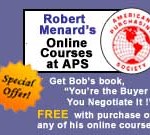How to Rate Supplier Performance
Purchasing Magazine regularly surveys its readers about supplier evaluation. The numbers vary slightly by year but an average of three quarters business purchasing departments have a system (formal or informal) for rating supplier performance. Would you be surprised to learn and Price is rated highest by fewer than 15%?
Importance of Total Cost of Ownership
The four elements of cost are: Quality, Service, Delivery, and Price (QSDP)
TCO =the sum of the cost elements in QSDP, or TCO = Quality + Service + Delivery + Price
The relative importance of QSDP allows each party in the negotiation to achieve its goals. Maintenance Repair and Operations (MRO) parts offer a good example. A buyer may be more concerned with having parts on hand at the supplier (Delivery) than with the Price. Downtime costs caused by not having an inexpensive low value item available would far outweigh any Price advantage from the seller’s competitor and thus is probably worth a higher price. The buyer attains its objective of availability and lower TCO and the supplier earns a price premium. Economically, it may cost the supplier more to warehouse the customer’s parts and thereby justify a slightly higher price. The supplier may understandably try to leverage that advantage into the highest supportable price. It the price gets too high, the buyer will recalculate its TCO. Meaningful negotiations based on objective measures proceed from the principles of TCO.
Each of the QSDP elements can be further broken down into sub elements. Doing so will create foundation of your negotiation plan. Here is one way we .could break down each of sub-element of QSDP.
Quality has as many manifestations as we deem are important to our purchase. In manufacturing, non-conforming material adds costs to the process. In the food industry, freshness and shelf life of perishables may be a major quality criterion. The same rationale is true for the other elements. Delivery may include transportation and storage costs, and Service could include response time and technical personnel and Price might include discounts and payment terms. These are just a few. More are listed below. Each has an impact on the TCO however, and we must evaluate how significant that impact is. In other words we must know our costs. That is an eminently logical and mandatory piece of advice, but it is not at all obvious, based on the performance of many negotiators.
These are just a few common sub-elements of QSDP. Adapt yours to suit the particular purchase.
| Quality | Delivery | Service | Price |
| Rejection % | Transportation | Response time | Payment terms |
| Shelf life | Storage | On site rep | Price change terms |
| Reliability | Stocking programs | Technical ability+ | Minimum orders |
| Useful life | On time % | Electronic ability | Discounts |
| MRO costs | Packaging, put up | Advertising | Lease vs. buy |
| Salvage value or trade in | Drop shipments | Exclusivity | Intellectual Property Ownership |
| QC/QA | Remedy policy | R &D | Tooling |
| Testing/certification | Warranties |
Many more can and should be added, depending upon your situation. These are the objects of our negotiation. We will build our negotiation plan and concession strategy around these quantifiable and measurable elements of cost so as to achieve the lowest TCO.
Let’s apply this principle to a sample purchase. If we were to buy concrete railroad ties, here is how we might rate QSDP.
We chose this order because we determined that time between replacements (Useful life) was most critical to us in terms of overall cost. The longer the time between replacements, the more the rail lines remain unblocked and available for revenue producing service by customers. So Quality ranked uppermost.
Concrete Railroad Ties
- Quality
- Delivery
- Price
- Service
Delivery was next the most important cost. Concrete ties are not equally plentiful as are wood ties around most of the nation, so provision will need to be made in the negotiation for ensuring availability.
Price came next, and Service last. Service has virtually no cost component in ties because the Quality element dominates. With high enough Quality, we won’t need Service and its associated costs. Price, therefore, came in third by default.
All we need do now is break out some sub-elements of QSDP and we can move we are done for the moment. For Quality, we could use; rejection percentage, useful life, scrap rate, and remedy policies. Delivery costs could include transportation and storage. Service might encompass technical competence or electronic capability, while Price could take in payment and price change terms.
This is exactly the type of exercise you must complete for every purchase. Once you do it, change is unlikely unless underlying cost structures for our business change, so this is well worth the effort. Notice that the most important element of cost will have the greatest number of sub-elements. This pattern is characteristic of the TCO model and makes eminent sense. If it is more important, it should have more manifestations.

